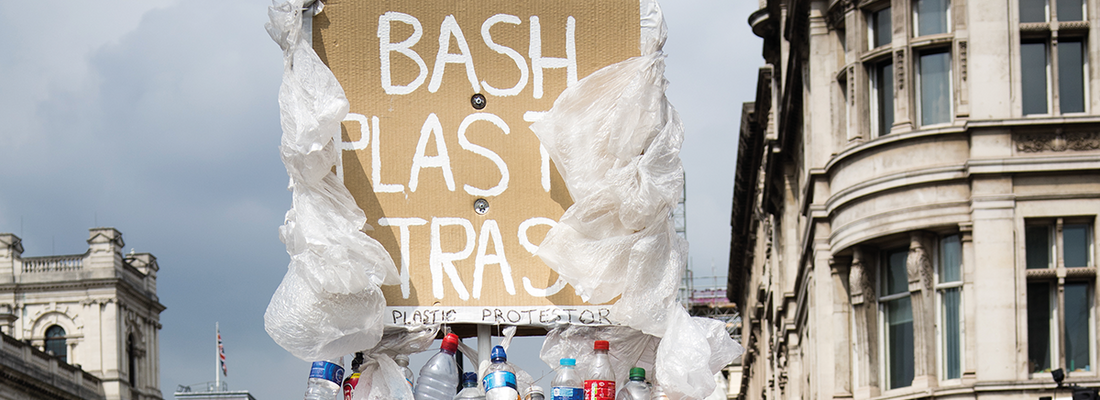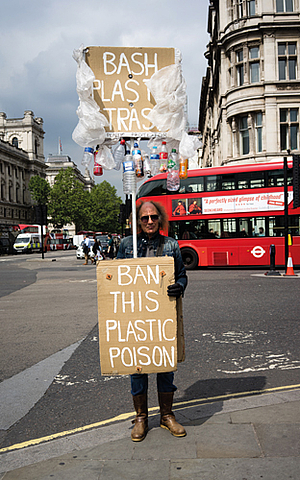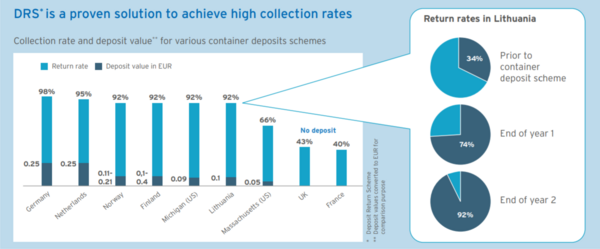

Plastic bans, plastic taxes and consumer plastic attacks. Plastic packaging is under heavy artillery after dead whales and fish have revealed their plastic stuffed guts in social media, accompanied by a soup of littered polymers which has been served onto some of the world’s most beautiful beaches, well documented by depressing photos and videos.
Adding further to the arsenal, reports state that Green House Gas (GHG) emissions from plastics consume the full CO2 budget available for materials towards year 2100, leaving nothing for production of aluminum, steel and concrete if the globe is to stay within a 2-degree Celsius global warming target /1/. The war on plastics is certainly on, and the value chain is already seeing reduced demand for some plastic packaging, partly due to material substitution.

Littering and GHG emissions are the main problems
So, is this a move in a sensible direction which is good for our common future?
After all, packaging is often needed and provides large overall benefits, like food safety and product shelf life. Unfortunately, in some cases it is not a good move, as plastics are often replaced by other packaging types with similar or other type of challenges. Assuming littering and GHG contributions are the main plastic-related problems we want to remedy; it is not great to replace e.g. PET bottles with glass bottles, as many people seem to think. OK, the litter problem related to glass is different, but LCA analysis indicate that the CO2 footprint is significantly higher for glass bottles than for PET bottles. Assuming distribution of hydration to people is the purpose, it is actually very hard to compete with the CO2 footprint of PET bottles if they are managed well according to best practices.
Efficient solutions exist
Assuming one ton of PET is allocated to production of bottles in a closed loop Bottle-to-Bottle system, up to 4.3 tons of CO2 equivalents could be saved when the reference level is incineration after single use /2/. Assuming the same ton of rPET was used to manufacture PET fibers rather than new bottles, only 1.7 ton of CO2 equivalents would be saved. Unfortunately, this is the main application for rPET today.
To get close to the 4.3-ton CO2 savings/ ton PET used, recycled content must be maximized. Here high and stable recyclate quantities and material purity are key.
Recyclate quantities are obviously affected by collection rates. To continue the example with PET bottles, practical alternative collection solutions for this commodity range from extraction of bottles from mixed household waste, collection from kerbside recycling bins, and Deposit Return Systems (DRS). Seen from a consumer’s perspective, the two first systems are rather similar and offer very high consumer convenience. PET bottle collection rates from kerbside collection systems are often in the 40-50 % range, while extraction of PET from mixed household waste is rare, as most mixed waste unfortunately goes directly to incineration or landfill.
''OK, the litter problem related to glass is different, but LCA analysis indicate that the CO2 footprint is significantly higher for glass bottles than for PET bottles.'' - Geir Sæther
In order of importance, consumer recycling behavior is influenced by a) monetary incentives, education/ knowledge, and b) convenience. Thanks to the power of monetary incentives exercised in DRS, even problematic littering related to out-of-home beverage consumption can be eliminated by such schemes. Collection rates for DRS are normally in the 85-95 % range (Fig. 2).

Hence, DRS is clearly the tool that offers the highest collection rates assuming deposit amounts are scaled according to local conditions. Since collection rate and littering rate is closely negatively correlated, the anti-littering effect of DRS is simply unmatched. DRS is therefore an obvious tool for eliminating the littering problem related to use of some plastics categories.
But DRS also provides unique material purity required for maximized recycled content in some demanding products. Inherent strict source control ensures foreign materials are kept out of the recycling loop. This source control in combination with dedicated logistical solutions provide super-clean material to recyclers. Complexity in the mechanical recycling process is thereby minimized and process yields are maximized.
All this contributes to maximizing recycled content in new recycled packaging which must adhere to the highest quality standards. Similar purities can be achieved from kerbside collection systems if increased complexity of recycling lines and reduced bale to flake yield are accepted. There are several plastics-packaging applications where neither material purity nor littering problems call for DRS to close the packaging material loop. One reasonable example is probably home care products, where packaging should be collected through kerbside systems, mixed waste sorting systems and/or sorting before incineration in order to be recycled.
To further contribute to recycled content, DRS should also be used to ensure that the obligated industry has access to its own collected and recycled packaging materials. This is a challenge today for the rPET market, as the combined share of rPET from Europe and USA used for new bottles is only 26 %, despite very high rPET demand from the bottling industry.
Hence, DRS is the tool which can deliver the highest recyclate quantities for new products with the highest material purity with the least complex mechanical recycling processes.
Cost efficiency is required
So, if DRS is so good it must be a very expensive alternative?
There are different implementations of DRS around the world, but well-designed schemes have high performance and moderate cost. The Norwegian deposit system delivers a collection rate above 90 % with a net EPR cost paid by the industry of 0.9 cent per PET bottle. Hence, the collection cost per ton of PET is approx. 360 EUR (after deducting income from the collected material). Compared to alternative EPR fees meant to cover actual cost of collection, this is often competitive, even if you don’t discount the monetary value of reduced littering.

Conclusion
To summarize, the war on plastic should be ended by implementing systems which ensure efficient and sustainable management of plastic packaging. This means eliminating littering and minimizing CO2 footprints by closing material loops. For some frequently littered commodities or high demanding applications, DRS should be implemented. For other commodities, sorting out plastics from various waste streams is more efficient. Together, the two systems are complementary to each other. Thanks to its strict source control, DRS might even provide the key to close the loop for food-grade recycled polyolefins. But that is another exciting chapter to be researched.
It is my firm belief that public opinion will embrace obviously sustainable solutions. As a result, the plastic war will cease. Peace and love!
________________________________________________________________
/1 / Material Economics, The Circular Economy, A Powerful Force for Climate Mitigation (2018), p. 79
/2 / Comparison of recycling and incineration of PET bottles, Østfoldforskning, 2016
The comPETence center provides your organisation with a dynamic, cost effective way to promote your products and services.

magazine
Find our premium articles, interviews, reports and more
in 3 issues in 2026.

